Intel DP55KG and DP55SB - Two P55s Reviewed
by Rajinder Gill on April 6, 2010 7:45 PM EST- Posted in
- Motherboards
Gaming and 3D performance
Before any of the results, I've personally got to stick my hand up and admit that a 9500GT is not really a suitable graphics card for differentiating these boards in terms of testing. This is something I will look to address for my next review.
We uncovered a bug with the two Intel boards when testing with our i5 670 Clarkdale CPU. At stock or overclocked, the 16x PCI-E 2.0 graphics card slot dropped to 1x link width. This only happened with the Clarkdale, our i7 870 CPU ran with the full 16x speed. This occurred on the latest 4816 BIOS on the Intel website as well as the 4752 BIOS that the rest of the testing was carried out on. Intel states that the i5 670 should be supported from the 3878 BIOS onwards.
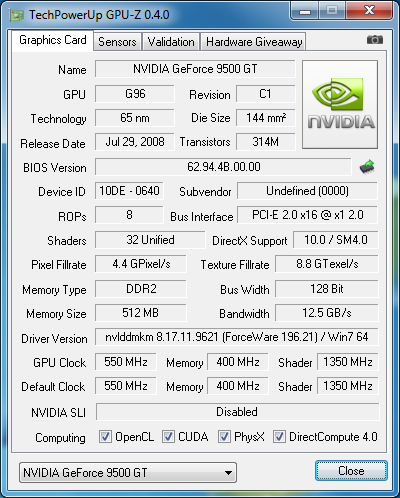
Crysis : Warhead
Using Crytek’s CryEngine 2, Crysis : Warhead still provides one of the most intensive graphical benchmarks available.
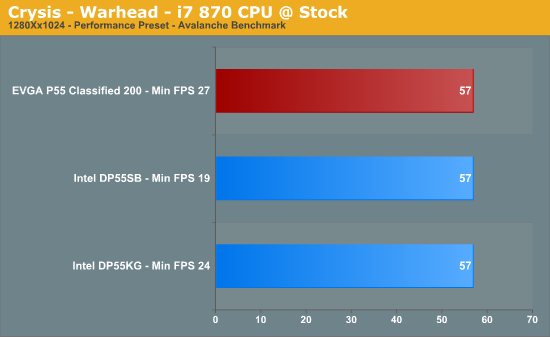
Very little to separate the boards in this benchmark, the minimum FPS slightly preferring the two ATX boards.
Far Cry 2
Featuring fantastic visuals courtesy of the Dunia Engine, this game also features one of the most impressive benchmark tools we have seen in a PC game.
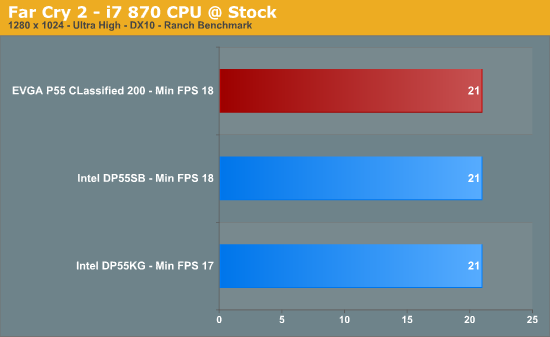
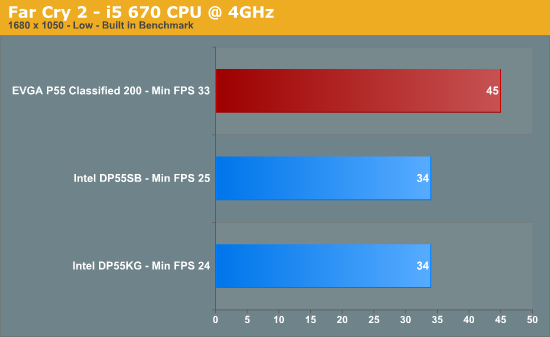
Intel's boards come in a fair way behind the P55 Classified 200 with the Clarkdale CPU, the 1x PCI-E bandwidth proving a significant bottleneck.
Warhammer 40K: Dawn of War II
We are big fans of the Warhammer franchise, especially Dawn of War II. One of the latest RTS games in our library is also one of the more demanding titles on both the CPU and GPU.
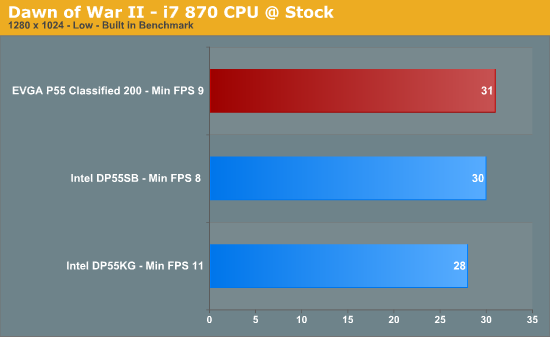
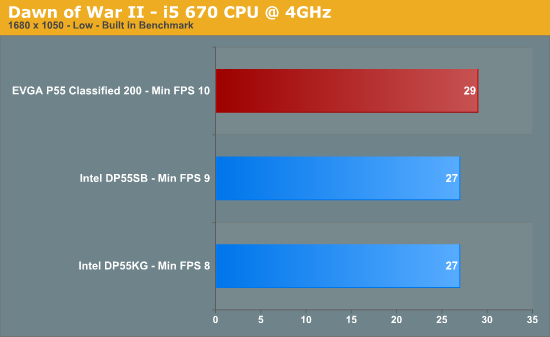
Again, the 1x PCI-E bottleneck doesn't help the Intel boards in Dawn of War II either.
AutoCAD 2010 x64—Cadalyst 2008
We utilize AutoCAD 2010 x64 and the Cadalyst Labs 5 benchmark.
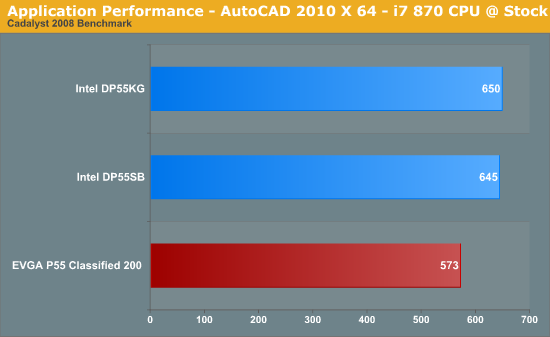
The Cadalyst benchmark seems to be a great all round test of 3D performance mingled with fast hard drive access. We're at a loss to explain why the P55 Classified 200 came out so much worse on this test, but this was repeatable.










26 Comments
View All Comments
vol7ron - Tuesday, April 6, 2010 - link
If you're doing a giveaway with this... it is my birthday coming up :)vol7ron - Tuesday, April 6, 2010 - link
Is that right (8:48 4/5)? I'm not sure where it is that you're 36 hours behind me?Richard Pawley - Tuesday, April 6, 2010 - link
Hi. The article went up with the time we started putting it into the backend - It updated soon after to show when it was actually published. You must've been quick to spot that ;-)Regards,
Richard
vol7ron - Tuesday, April 6, 2010 - link
i browse AT like it's my wifeAnand Lal Shimpi - Wednesday, April 7, 2010 - link
HA! best, quote, ever.silverblue - Wednesday, April 7, 2010 - link
And here's me thinking that would mean "rarely, and only when I'm on my best behaviour"...AstroGuardian - Wednesday, April 7, 2010 - link
Welcome to the club mate ;-)What was funny was some few days ago when my wife said something like: "Stop reading that damn BLUE site of yours...". This made me laugh cause i am with AT for years longer than with her ;). Now she noticed the blue color lol
SunLord - Tuesday, April 6, 2010 - link
I love how the micro atx board literally looks like they just cut off the bottom part of the ATX board kind of coolMadMan007 - Tuesday, April 6, 2010 - link
"While the 2:6 and 2:8 memory ratios were satisfactory"So does that mean that using those ratios you can clock the bclk and CPU higher and just not get the e-peen stretching superhigh memory speeds that mostly seem to help a few synthetic benchmarks? If those ratios are 'satisfactory' and the only purpose of high memory speeds is artifical benchmarks you could focus on getting the best overall overclock and not worry about maxing out the memory speed.
I do hope you tried clocking with those ratios, perhaps the various annoyances go away or are not as bad in that case. If not I'm a little disappointed if a lot of time was spent trying to max out memory speed rather than focusing on 'real world' performance as I expect from AT.
deruberhanyok - Wednesday, April 7, 2010 - link
Thanks for the writeup! quick questions:Was the PCI-Express slot operating at x1 speed a bug only with the i5 670, or is it something in all of the Clarkdale processors until the updated BIOS comes out?
I noticed they both include a bluetooth antenna. I'm guessing the BT module is the tiny green PCB next to the SATA ports. Is that standard on all of the boards? How was reception/performance? I like the idea of not having to have an external bluetooth dongle to connect keyboards, wireless headset, cell phone, etc.